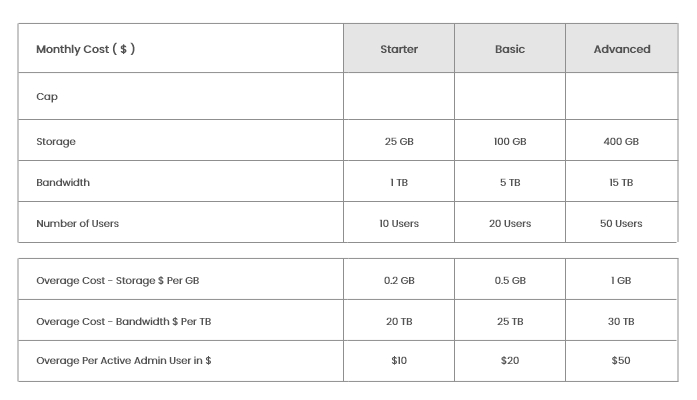



The Essential Checklist for Beginning SEO in 2023 - Part One (1/2)
We've created an SEO checklist to assist you improve your site. Simply follow along stage by stage to observe how...
Despite emerging trends and advancements, the primary SEO mainstays will remain intact in 2023. Even if you are aware of these SEO strategies, developing a clear approach might appear difficult. But it doesn't have to be.
We've created an SEO checklist to assist you improve your site. Simply follow along stage by stage to observe how your rankings might improve.
Let's start with the fundamentals.
1. Install Google Search Console and Bing Webmaster Tools.
If you're searching for a free tool to monitor your site's performance and traffic, improve the performance of your website listings, and rectify problems, Google Search Console should be at the top of your SEO checklist.
Despite the fact that Google is the undisputed king of search engines,
Bing Webmaster Tools May assist you in identifying and correcting any issues that are hindering your website from ranking better in search results. It's also an excellent resource for optimizing your website for Bing and boosting your general SEO health by discovering duplicate content concerns and testing loading speeds.
2. Implement Google Analytics
Google Analytics is an effective tool for tracking website visitors. It is critical to set up Google Analytics when you begin posting content so you are able to track the success of your website.
3. Build and Publish a Sitemap
You make it easy for crawlers to index your pages and identify any changes you've made since the last time the search engines scanned your site by building and submitting a sitemap. A site map also boosts exposure while assisting navigating and correcting bad linking.
A sitemap may be created in a variety of methods, the most popular of which is an XML file. After your sitemap is complete, upload it to Google Search Console and Bing Webmaster Tools. They will crawl your website and include it in their indexes.
4. Build a robots.txt file.
Don't forget to include a robots.txt file when building or modifying a website! This file instructs search engine bots on which portions of your website they may crawl and index.
The following are the advantages of incorporating robots.txt in your SEO checklist:
- By avoiding unnecessary pages from loading, you may help optimize the load time of your website.
- Preventing duplicate material from being indexed by search engines on your website
- preventing search engines from indexing low-quality or spammy pages
- Concentrating your SEO efforts on your site's most critical pages
Consider the following when constructing your robots.txt file:
- Which pages do you want search engines to crawl and index on your website?
- Which web page would you like to block from crawlers?
- What parameters do you want to use to crawl specific pages or sections of your website?
- How often should the robots.txt file be updated?
5. Check that the search engines can crawl and index your site.
If you have a website, you must guarantee that search engines can crawl and index it. Then again, you want potential clients to find you online, don't you? Here are a few items to mark off
- Your SEO to-do list to assist ensure that search engines can accomplish exactly that. Verify that spiders can visit your site. To index your website's pages, search engines must have access to all of them. You may confirm this using Google Search Console's URL Inspection Tool.
- For your pages, use keyword-rich titles and descriptions. This can help your website rank higher in search results.
- Provide connections to other similar pages on your site so that search engines can comprehend the content of your page and rank it appropriately.
Checklist for On-Page SEO in 2023
On-page SEO is a vital component of optimizing your website for search engines. You may enhance your rankings, attract more traffic, and increase engagement by optimizing your website's content, structure, and metadata. Let's take a deeper look at an on-page SEO checklist that may just assist you in meeting these objectives.
1. Choose Primary and Secondary Keywords to Optimize For
Your major keywords will perform best when combined with focus and secondary terms.
Secondary keywords are synonyms for your prime keywords. When included in content, they can assist bring it in front of a larger audience and boost your website's rankings.
Here are some tips to help you do that:
- Select keywords that are relevant to your company and target demographic.
- Make sure your keywords are not only relevant to your prospective consumers, but also popular enough that people use them in search engines.
- For the greatest benefit of your SEO efforts, use a combination of short-tail and long-tail keywords.
- Investigate who your rivals are targeting and look for holes you can fill.
- After you've decided on your target keywords, make sure they're visible across your
2. See What It Takes to Rank for Your Targeted Keywords
This should be on everyone's SEO to-do list. Your selected keywords are useless if you don't rank for them. How do you rank for them with that in mind?
You might begin by following these guidelines:
- Learn about data points including search volume, cost per click (CPC), SEO, and search difficulty.
- Make a list of content suggestions.
- Then, do keyword research.
- Evaluate the data to determine the most effective keywords.
- Featured snippets and meta descriptions should be optimized.
- Add keywords in anchor text and carefully employ your essential keywords.
3. Examine the Keyword Profiles of Your Competitors
Just because you rank #1 for a certain keyword or collection of keywords does not guarantee that traffic and conversions will follow.
To fully optimize your website and its content for your target audience, investigate your rivals' keyword profiles and learn what keywords and phrases they are targeting.
This research will provide you with a decent notion of the competition you're up against, as well as the terms and phrases that are most relevant to your target audience. Equipped with this knowledge, you can start targeting those similar keywords and phrases on your own website, which can help you increase your ranks and exposure over time.
The end result? They have the potential to be wonderful, assisting you to rank better, save money, and enhance your ROI.
4. Check Google to see what search intent your main audience has.
One of the most important variables for SEOs to consider is search intent. So what exactly do we mean by search intent,' and why should it be on your SEO checklist?
To begin, search intent is an important ranking element, with many top SEOs basing their content strategy on it.
When you understand what the searcher wants, you can develop content that matches their requirements and gives them the information they want.
Put yourself in the shoes of your prospects and question,
- "What are they entering into Google or whatever search engine they're using?" Google's 'People Also Ask' option is an excellent place to start.
- What are the questions that searchers are attempting to answer? Again, 'People Also Ask' might help you here.
- Finally, do keyword research to identify prominent keywords and phrases associated with your issue.
- Examine the SERPs to see what results emerge (Keywords appear in bold).
5. Examine for Large Image Files
It's a simple equation: the bigger your picture files, the longer it takes to load them.
Use a tool Google PageSpeed Insights to check for large image files. The PageSpeed tool analyzes loading times and provides recommendations about how to improve them.
6. Keep an eye out for duplicate content and keyword cannibalization.
If you repeat the same keyword term too frequently, search engines may punish your site.
Furthermore, if you have many sites that target this very same keyword phrase, search engines may be unsure which page to prioritize. What does this have to do with your website? This is known as keyword cannibalization, and it may result in decreased search engine results for all of your pages. It is the last thing you want after you have worked so hard to build your website.
To avoid this, utilize an SEO checklist that outlines your keywords to verify that you aren't optimizing your pages for the same keyword phrases accidentally.
Furthermore,
- Diversify your keyword usage across your site. Don't only use them in the titles and headers; use them throughout your text as well.
- Make certain that each page has its own title tag and meta description.
- If you have numerous websites with identical content, be sure they aren't all utilising the same keywords.
- Check Google Search Console for duplicate content and cannibalization problems.
7. Be Certain to Provide Valuable, Actionable Content
Content creation has been added to your SEO to-do list. It cannot, however, be just any material; it must be compelling, informative, and actionable.
Initially, you need compelling material since you don't want readers to abandon your article before they get to the CTA or take advantage of your lead magnet offer. You're wasting your time if your material is uninteresting and uninspired, and your reader isn't doing what you want them to do.
Finally, when developing content, always keep Google's standards in mind.
8. Make Certain That You Have a Relevant URL
Descriptive URLs help you with SEO and make it easier for clients to locate your website.
Furthermore, descriptive URLs make it easier for searchers to comprehend what your content is about. Furthermore, it allows search engines to give relevant material to the correct individuals.
Also, more descriptive URLs can increase click-through rates since consumers are more inclined to click on a link that appropriately represents the page content.
You may use tools like Google AdWords Keyword Planner to uncover popular keywords linked to your business to help you create more descriptive URLs.Then:
- Use clear, succinct language that appropriately portrays the content of the page.
- Avoid using extraneous words or symbols such as & or%.
- Check that each URL is distinct and does not duplicate another page on your website.
- Maintain URLs as short as feasible while maintaining readability.
9. Title tags, meta descriptions, and image tags should all be included.
Adding title tags, meta descriptions, and image tags to your pages is a critical component of an SEO checklist. These tags educate search engines about your page and can help it rank better.
Title tags, you see, are one of the key variables search engines use when deciding a web page's rank.
There are also meta descriptions. You've probably seen them before. They're the small blurbs that display beneath your title on search engine results pages (SERPs), and they're your chance to get folks to visit your website.
Finally, one of the simplest methods to increase your SEO is to add image tags to your images. Image tags inform search engines about the content of your picture, which helps them rank your website higher in search results.
Hocalwire CMS handles the technical parts of keeping Large Sitemap, Indexing pages for Google, Optimizing page load times, Maintaining assets and file systems, and Warning for broken links and pages while you handle all these non-technical components of SEO for Enterprise sites. If you're searching for an enterprise-grade content management system, these are significant value adds. To learn more, Get a Free Demo of Hocalwire CMS.

